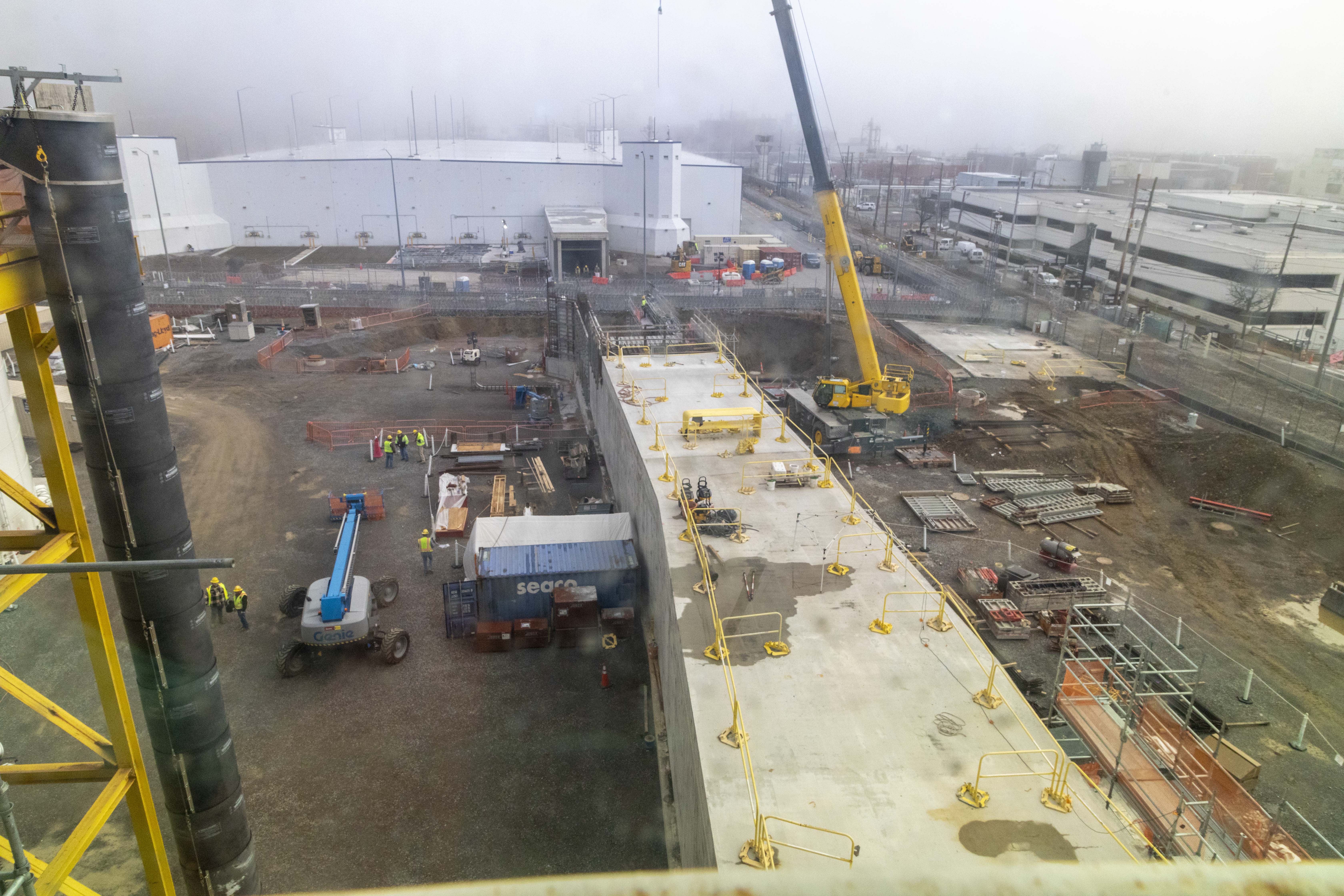
The HEUMF Connector (HCON) will connect HEUMF and UPF, providing a more efficient way to transport production material between the two facilities.
San Francisco has the Golden Gate Bridge to Marin County, New York and New Jersey have the Lincoln Tunnel, and in the near future, Y-12 will have the HEUMF Connector (HCON) to UPF.
January 2023 marked 13 years since HEUMF became fully operational. During a four-year construction project, a rough-graded site was transformed into the massive concrete and steel structure that serves as our nation’s central repository for uranium. Approximately 300 ft. x 475 ft., HEUMF has areas for receiving, shipping, and providing long-term storage of uranium.
Before HEUMF receives the uranium, uranium “recycling” currently takes place in Building 9212, a large chemical processing facility that was built during the 1940s in the early era of nuclear weapons production. Since then, it has been modified many times to meet changing national security missions. It was optimized for the large nuclear weapons production mission necessary during the buildup of U.S. thermonuclear forces in the 1950s and 1960s.
Moving the uranium from Building 9212 to HEUMF requires coordination between the two facilities, and material is transported on a special nuclear material vehicle (SNMV), endearingly nicknamed “the goose” by those who work with it routinely. Security police officers accompany the SNMV, and transports have to be scheduled well in advance based on the logistics associated with delivery.
For Special Nuclear Materials Operations production specialists like Bill Hale, the transport game changes once the Uranium Processing Facility (UPF) and HCON are complete and in operation.
“It’s going to be night and day as far as efficiency goes,” said Hale. “UPF Integration is leading teams to ensure HEUMF has a process to support UPF.”
UPF will provide new floor space and consist of processing capabilities for uranium casting, oxide production, and salvage and accountability operations to support the nation’s nuclear weapons stockpile, defense nuclear non-proliferation, and naval reactors. On the east side of UPF's Main Process Building, material will be transported directly to HEUMF through HCON. Material will be delivered to the HEUMF dock and transported through HCON; UPF will then be able to accept the material through a door.
From a construction standpoint, HCON really is a mammoth. At completion, HCON will be 475 feet long and contain 180 tons of steel, over 13,000 feet of conduit, and 5,300 cubic yards of concrete. To put these numbers into perspective, the steel weighs more than the Statue of Liberty, the length of conduit is four times the length of Navy Pier in Chicago, and the concrete could fill 25,000 bathtubs.
UPF and HCON are an engineering feat and, once operational, will be a huge win for Y-12 operations.
“We’ll have a straight line between HEUMF and UPF to transfer material that is protected from the elements and devoid of any other site obstacles. Being in a secure, protected environment also will alleviate the need for a security police officer to accompany the material transfer,” said Julie Huff, Y-12 Operations. “Fulfilling the mission requires us to optimize our strategies, and HCON truly is all about efficiency.”